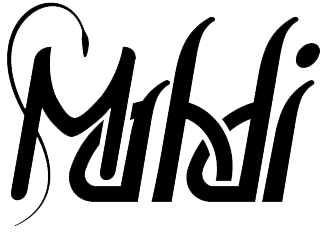
How come the usual demonstrations, which were to originally serve the call of innocent young people for humanitarian purposes as part of their democratic rights, have suddenly turned into opportunities for people to try and topple the governments? Is this new method of staging a coup used to manipulate countries?
Primarily, protests and acts of similar nature “are an unquestionable part of democracy, freedom of opinion and expression as long as they are within the limits defined by the ‘law’”. Protests come in various ways such as demonstrations, rallies, strikes, pickets, boycotts, etc. In general, the aim of the political protests is to respond to the faulty policies, drawbacks and negligence of the administrations and to awaken people by warning the relevant people and institutions.
Legitimacy and success criteria for protests
Legal protests are welcomed by society and addressed by the government in direct proportion to the extent that their demands are concrete, justified and practical. Protests that lack such characteristics have little chance to have their demands met.
The anti-government protests that took place in three separate waves in Bulgaria in 2013 proved to confirm these criteria. The demonstrations against high electricity prices in January and February succeeded as the demands of the demonstrators were reasonable, urging the government to resign.
And, in the middle of the year, another wave of demonstrations against an officer assigned by the new government occurred and ended with the resignation of the officer. However, the protests at the end of the year, which called for a change of the system and other illegal demands, and eventually turned into riots, were not widely supported by overall society, and it failed.
A similar instance happened with the outbreak of the Gezi Park protests in the same year, in Turkey. It was a bona fide and environmentalist protest based on concrete and practicable demands, which was originally sparked by justified reasons and was likely to result in success.
The young people there sought to protect nature in a legitimate way. Indeed, the government took a positive step and shelved the project of building a military barrack by demolishing the Gezi Park. However, these legitimate demonstrations changed tack with the provocation of separatist and terrorist groups in the following days.
Upon the instigation of terrorist groups, these demonstrations spread to other cities and turned into armed and bloody riots, even into an anti-democracy movement. This evident coup attempt, which aimed to overthrow the elected government by means of violent methods and disregarded the will of the majority, was rendered ineffective by security forces.
These two instances are, in fact, an indication that demonstrations, in the hands of those with malevolent inclinations, may lose their legal and political legitimacy and turn into criminal situations.
In recent years, some external powers have often employed this new-generation method to stage a coup in the design and control of internal affairs of various countries.
With the intervention of a professional team, ordinary demonstrations turn into violent riots and coup attempts. These riots culminate in civil wars at times. There are attempts to overthrow governments elected by the people’s will using anti-democratic riots when governments don’t comply with certain global powers.
Professional revolutionary organisations and Otpor
The key to such dramatic outcomes is social media. The target audience, predicted to participate in demonstrations, are stirred, agitated, organised and impelled through social media. The organisation and responsibility of the involvement of some agents and provocateurs in these demonstrations are now assumed by several provocative organisations.
The training and coordination of the illegal organisations and the separatist-terrorist groups, which allow for the demonstrations to turn into riots, are also provided by subcontractors. Some authors, artists, academicians, journalists and members of various non-governmental institutions are organised by these groups. Some media organisations against the regime are responsible for public relations management for the riots.
One of the most common groups among these “professional revolutionary organisations” is the Serbia-based resistance organisation Otpor. As stated by some independent observers, Otpor organises coup attempts and civil riots by providing training and logistic support for the United States-backed dissident organisations in many countries, such as the former Yugoslavia, Serbia, Georgia, Bulgaria, Ukraine, Egypt, Brazil and Turkey. There is a consensus that the Central Intelligence Agency (CIA) has been projecting social riots in 50 countries through Otpor and its offshoot, Canvas (Centre for Applied Non-Violent Action and Strategies).
A relevant source puts forward the following interesting findings on Otpor:
The (Otpor’s) fist-logo, would turn up 11 years later in the streets of Cairo, illustrating further the preposterous, foreign-backed nature of the Egyptian uprisings... Serbia’s Otpor would continue receiving funds from the West and become a “CIA-coup college” of sorts under the name of Canvas.
The research article penned by Carl Gibson and Steve Horn and published on Occupy.com deals with the international financial, intelligence and political connections of Otpor and features the following information based on the WikiLeaks documents:
Serbia’s Srdja Popovic is known by many as a leading architect of regime changes in Eastern Europe and elsewhere since the late-1990s, and as one of the co-founders of Otpor… Popovic and Canvas have also maintained close ties with a Goldman Sachs executive and the private intelligence firm Stratfor as well as the US government.
We could easily multiply these examples. It has been a common opinion on an international scale that Otpor is being employed as leverage to suspend the administrations conflicting with the interests of the US.
That is why some media organisations, acting as the spokesman for the US administration, are now gushing over and complimenting on Otpor at every turn. The British media organs such as BBC rigorously advocate that the executives of Otpor have nothing to do with the organisation of coups.
In a similar way, some Turkish media organisations gave publicity to similar explanations during the 2013 Gezi Park riots. Claimed to be directed by Otpor and considered as a rebellion against the state and treason by law, the armed coup attempts gave rise to the attempt to occupy the prime minister’s residence and were interpreted by some media organisations as “the exercise of legitimate, democratic rights, and freedom of expression by the people”.
These media organs sought to create an illusion reflecting and supporting the Marxist militants and the members of separatist terrorist organisations, who do not represent even one of a thousand people, as the representatives of the people. The security forces, attempting to preserve public order against these illegal actions, were served as “the so-called enemies of freedom and democracy” by these media organs.
That being said, it is obvious that the mass demonstrations that overthrow governments, divide countries, and lead to bloody conflicts and civil wars are far beyond the naive youth movements or protests perceived by the public. These are indeed the architectural engineering of deep state projects and shadow organisations.
Adnan Oktar's piece in New Straits Times:
http://www.nst.com.my/news/2016/05/146480/red-line-between-protests-and-riots

